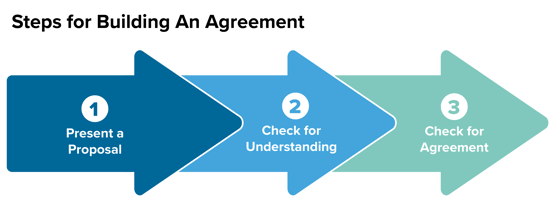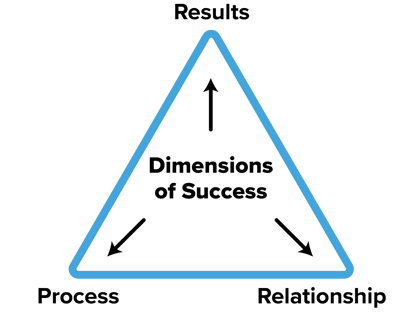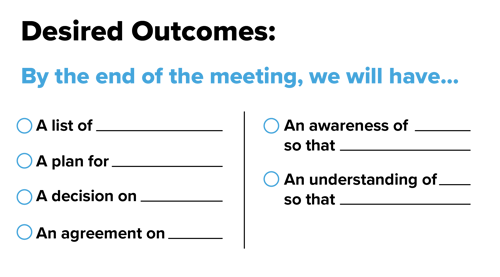Fully Remote: Challenges and Opportunities
As our workplaces and world have become upended due to COVID-19 in the past few weeks, we are faced with significant implications for the foreseeable future around how people connect and collaborate to get work done. To combat this virus, social distancing seems to offer us the best hope and strategy — by actually being physically apart from each other.
As organizations are making drastic adjustments moving to a remote setting, many find that working remotely is uncharted territory and isn’t as easy as it might seem. It can be downright difficult — especially during a time period when stress runs high, families must balance work and life hours, and mental health. Our very resilience can be challenged to the core. As a leader, you might be considering:
- How can I ensure employees stay productive and healthy while working from home?
- Are employees working on the right projects?
- How do we balance the needs of our business with the needs of individual family commitments?
- Do employees have the essential skills to work in this new way?
- How do I re-imagine our company and culture for remote work?
First, know that you don’t have to go at it alone. As an organization that has been teaching companies and their people how to collaborate for more than five decades, Interaction Associates has a highly unique and differentiated approach to helping people learn discrete skills, build shared language, and deploy a powerful set of tools and techniques that can grease the rails when it comes to working, leading, and meeting together to achieve incredible results.
Two years ago, Interaction Associates shifted to a 100% remote company, so we have a perspective that’s rooted in reality. I want to share a few common challenges of working remotely, offer practical tips, and provide a demonstration of a few IA tools that can help with the challenge. The tips aren’t theoretical – they are real solutions wrapped around deploying a certain toolbox of skills. Choosing the right tool for the situation is half the battle. Now, let’s get started.
Challenge #1: Numerous communication channels can be difficult to manage and lead to poor time management and low productivity
Unlike working in a physical office with set hours and meetings in person, remote employees often have more unpredictable and flexible hours. Often the shift in geographic boundaries and work hours comes with a shift from synchronous (real-time) to asynchronous communication (without a requirement to respond in real time). The result: more emails, way more emails! The 2019 Adobe Email Usage Study highlights that, on average, workers are already spending more than five hours a day reading emails – including breakfast, lunch, dinner, and beyond into evening hours. We have come to both love and hate email. Email makes it easy to communicate — perhaps too easy (I’ll just CC one more person...) and isn’t always the best medium.
Other communication channels (phone, text, Slack, WhatsApp) are often quickly utilized as employees seek to obtain information and stay in touch. This frequently leads to the fracturing of relationships and trust as everyone gets overloaded with information from different channels. The result: lower productivity, decreased morale, and poor time management.
Practical Tip #1: Build Agreements Around Communication Norms and Standards
When it comes to remote work, effective and accurate communication and flow of information within an organization is critical to keeping everyone aligned and moving forward toward a common goal. If you haven’t started, now is the time to establish and build specific agreements around clear communication norms and standards. For example:
- An agreement on where and how your team will store information (location, file naming conventions, level of access).
- An agreement that team members respond to emails within 48 hours.
- An agreement that if an email chain escalates to three back-and-forth responses, it’s time to stop the madness and take the conversation off email and directly to phone or video conference.
- An agreement that everyone will maintain an up-to-date calendar (which allows for faster cycle time when coordinating team schedules).
- An agreement that situations requiring a response within two hours are primarily handled via phone. Do not rely on email to receive an urgent answer.
- An agreement on utilizing other communication channels/platforms (for example, Slack for direct messaging when both individuals are online). Ensure that everyone first understands the proposed standards – and then work to build agreements.
Agreements are the currency of collaboration and often they are a critical component that’s missing. Next time you’re working to build an agreement with your team, your co-worker, or your spouse, try the following IA tool and approach:

- Present a Proposal: “My proposal is that our team picks up the phone and calls each other versus sending an email if we have a critical issue that needs to be addressed within two hours.”
- Check for Understanding: “Is there anyone who is unclear* about my proposal?”
- Check for Agreement: “Is there anyone who is unable* to accept this proposal?”
That’s it – simple and easy. Most people forget step #2, which is to check for understanding.
*Within the above example, I’ve utilized a negative poll (which uses language such as: unwilling, unable, unclear). This gives explicit permission to the introvert and is a shortcut to ensuring understanding and building quick agreements.
Challenge #2: Remote work can lead to a sense of isolation and uncertainty
Working in the presence of others often leads to sense of deep connection and energy. A shift to remote work can sometimes lead to a feeling of isolation or uncertainty, especially for those individuals who are more extroverted in nature or live alone. Their primary daily interactions may be limited to those they work with – now exclusively experienced via a webcam.
Practical Tip #2: Establish Balanced Organizational Rhythms and Connection Points
Developing routines, especially during times of stress, are critical for ensuring positive mental health and reducing our levels of stress. A 2016 blog by meditation app provider HeadSpace summarizes that clinical psychologists have proven that routines can be powerful ways to treat insomnia, anxiety, and stress. Routines allow for the prioritization of important activities and clear structure.
Within the remote-work world, employees often will work different hours. Due to COVID-19, couples with children may have to work in alternating shifts so they can care for their children throughout the day. Regardless of what your team’s work hours might be, establishing organizational rhythms, connection points throughout the week, and a sense of consistency are huge for developing a remote work culture and resiliency. For example:
- Our functional team will hold a weekly meeting on Mondays: 2:00 to 3:00pm ET. During this meeting, each member will publicly share their top two goals for the week.
- As a leader, I will hold a 1:1 weekly with my team members for 30-minutes.
- As a leader, I will send out a company update weekly on Monday mornings.
- Once a month, our organization will celebrate upcoming birthdays, work anniversaries, and achievement awards.
Routines and organizational rhythms can be varied and flex to meet the unique needs of your organization to achieve business results. However, especially in times of high stress, it’s critical for leaders to think more broadly about success than financial results alone. You must also think about the process and relationships. Billionaire Marc Cuban highlights this in his insights on crisis management – it’s good business to take care of your employees.

Because leaders are accountable for results, they tend to focus their energy and attention on reaching the goal quickly. Consequently, leaders often inadvertently undermine the long-term success of the endeavor. As a more balanced approach, Interaction Associates believes in producing success across three dimensions: results, process, and relationship.
- Results: completion of the task, achievement of the goal
- Process: how the work gets done, how the work is designed and managed
- Relationship: how people interact and relate, how people feel about their involvement and contribution
To more holistically support those in your organization, take a moment to also consider the process and relationship dimensions.
Challenge #3: Ineffective Meetings Become the Majority of Your Day
If you haven’t done remote work before at scale, you’ll inevitably notice that you have more meetings. Without being in the same location, employees often call a meeting to solve problems, gain access to information, and stay connected. Online meetings literally become the primary connection point within your organization. And if you succumb to too many meeting requests throughout the day, it can be downright ineffective.
A 2017 article by Harvard Business Review, Stop the Meeting Madness, summarizes the challenge. Executives spend nearly 23 hours a week in meetings, and time in meetings can often be a blocker to so-called “deep work” – a term outlined by Cal Newport, the Georgetown University computer science professor, who has declared that knowledge workers are spending too much time on shallow work – those non-cognitive, logistical tasks that are often performed in a state of distraction. This keeps workers from getting into a state of deep concentration and creating new value. As a build onto what Newport outlines, I want to suggest that meetings themselves aren’t the root problem. Rather, it is the way in which meetings are conducted (and perhaps the frequency) that’s the problem.
Practical Tip #3: Set Your Virtual Meetings Up for Success
Meetings – and the problem with meetings, whether remote or in-person — aren’t going away anytime soon. In fact, I would argue they will accelerate with remote work. Take a moment to reflect on common problems: they don’t start on time, the wrong people attend (or don’t attend), no one captures notes, and there is lack of clarity on how decisions are made. Unearthing the root of these issues reveals that 90% of meeting problems are not content but process challenges. So, learning some process tools is the first step to overcoming ineffective virtual meetings. As a pioneer in group process dynamics and effective meeting skills, Interaction Associates has been teaching leaders in the world’s top organizations a better approach to meetings. Below are some practical tips on setting expectations and establishing a process to shift from ineffective to effective meetings:
- Build agreements with your team on how often you will meet – be consistent each week and aim to start and end on time (see Practical Tips #1 and #2).
- Consider if a meeting is really necessary; can it instead be communicated in a weekly email update (Practical Tip #2) or via Slack (Practical Tip #1)?
- When you must have a meeting, first clarify meeting roles. If you are the meeting leader, ask someone to serve as scribe and take notes. Ask another to serve as timekeeper. Better yet, ask someone else to facilitate the meeting and focus on process so that you can focus on content/decisions.
- Clarify and articulate how decisions are to be made prior to getting into content. For example, “the decision-making method is that, as the leader, I am seeking input from the group. I will then make the final decision".
- Require everyone in your organization to learn and implement the IA concept, “Desired Outcomes”.

A Desired Outcome is a statement of the expected results of a meeting. It answers the question: “What will we walk out with?”. There are two different types of desired outcomes: Products & Knowledge. Products are tangible items, such as a list, a plan, or an agreement. Knowledge is an awareness or an understanding of X so that Y can occur. All statements should be brief, specific, and measurable, written from the perspective of the participant, and be nouns not verbs. Developing and using Desired Outcomes has an immediate effect on aligning and driving towards conversational results. It transforms your meeting agendas from “discuss the budget” to “a decision on how we will trim our budget by 10%”.
Let's put this into action. If I were a leader trying to align my team around how we were going to handle the business impact of the COVID-19 pandemic, I might structure my desired outcomes like this:
By the end of this meeting, we will have:
- A shared understanding on how COVID-19 has impacted our business from a financial and operational perspective so that everyone has a similar baseline of knowledge and can best provide input on our future strategy.
- A prioritized list of supply chain adjustments we will make to ensure our current customer fulfillment needs are maintained.
- A decision on how we will communicate fulfillment changes to our customers.
- A list of next step agreements.
In closing, remote work is becoming THE way to work at the moment and offers organizations a crash course in the challenges of working together from a distance. By using the IA Practical Tips outlined above to tackle some of the most common challenges with working remotely, you'll see an immediate improvement in the quality of how people work together and a realization that successful remote work is possible with the right mindset, skill set, and culture. We are better together.
About Chris Williams
Chris’ experience includes work in operations, recruiting, and complex research. He has supported senior-level executives in a variety of industries including economic development, government contracting, and strategy consulting. Chris holds a BA in Political Science from the University of North Carolina at Chapel Hill and a Masters in Public Administration (MPA) from the University of North Carolina at Wilmington.






